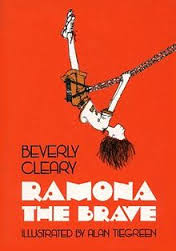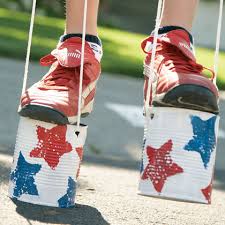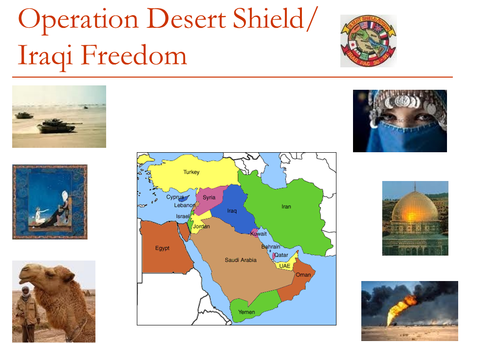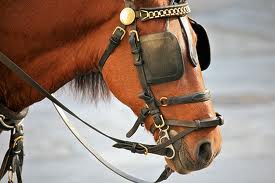PBL21 - How it all began
A sailboat on the ocean is the perfect metaphor for project-based learning for the 21st century. It is a a journey, and that journey is guided by a compass - not a map. It is a living curriculum (as opposed to a dead curriculum based upon and driven by dry, boring textbooks and curriculum pacing guides).
As with every other topic in the field of education, many voices are offering their version of PBL. I have been designing and implementing PBL since before there were any books about it (and there were no web sites, period). Actually, project-based learning has been around (off and on) since the time of Socrates. It experienced a surge about 100 years ago with the work of John Dewey and the Progressive Schools movement. More on that topic elsewhere.
The purpose of this page is to define PBL21. I will begin with a brief history of how it came to be. It did not begin with thinking pedagogically about backwards design, or thinking about how to get our students working on the higher levels of Bloom's Taxonomy. It was really more of an experiment and a "gut feeling" that was the first step in this journey. I partnered and planned a lot with another fourth grade teacher on several interdisciplinary projects. Here is where we began and why:
My curriculum design was born out of frustration - I was bored with the fragmented, textbook-driven curriculum, and the students were bored. As a result there were "discipline problems" - nothing huge, but the students were definitely not excited about school. There were many, minor disruptions and some attitude problems.
Another teacher and I began to brainstorm things that we could do to make school more interesting to our students. We began by eliminating the basal reader, and we purchased classroom sets of many, wonderful novels. Each set was placed in a basket and all were stored in a central place on campus. Any teacher could go to this area and select as many sets as he or she desired, sign them out and take them to their classroom. It was heaven!
As with every other topic in the field of education, many voices are offering their version of PBL. I have been designing and implementing PBL since before there were any books about it (and there were no web sites, period). Actually, project-based learning has been around (off and on) since the time of Socrates. It experienced a surge about 100 years ago with the work of John Dewey and the Progressive Schools movement. More on that topic elsewhere.
The purpose of this page is to define PBL21. I will begin with a brief history of how it came to be. It did not begin with thinking pedagogically about backwards design, or thinking about how to get our students working on the higher levels of Bloom's Taxonomy. It was really more of an experiment and a "gut feeling" that was the first step in this journey. I partnered and planned a lot with another fourth grade teacher on several interdisciplinary projects. Here is where we began and why:
My curriculum design was born out of frustration - I was bored with the fragmented, textbook-driven curriculum, and the students were bored. As a result there were "discipline problems" - nothing huge, but the students were definitely not excited about school. There were many, minor disruptions and some attitude problems.
Another teacher and I began to brainstorm things that we could do to make school more interesting to our students. We began by eliminating the basal reader, and we purchased classroom sets of many, wonderful novels. Each set was placed in a basket and all were stored in a central place on campus. Any teacher could go to this area and select as many sets as he or she desired, sign them out and take them to their classroom. It was heaven!

Initially, then, we just went from basal readers to "real" books. Then we planned some activities to go along with the book. The first book, which we read as a class - I know, not so personalized - was Ramona, the Brave! A wonderful book. In the story, Ramona's teacher gives the class an assignment to interview one of the elderly people in their neighborhood to find out what they liked to do for fun when they were children. Ramona interviews a woman who tells her about the tin can stilts they made. Of course, Ramona and her friend, Howie, immediately make tin can stilts and have a good time clanking around the neighborhood.
So, one of our activities, which may not have been very educational, was having our students make tin can stilts just like Ramona and her friends. We were really in the dark, just experimenting, and trying to find a way to motivate our students. We were not yet at the point of thinking about pedagogy. We knew that we were making connections to the state standards at least for language arts.
So, one of our activities, which may not have been very educational, was having our students make tin can stilts just like Ramona and her friends. We were really in the dark, just experimenting, and trying to find a way to motivate our students. We were not yet at the point of thinking about pedagogy. We knew that we were making connections to the state standards at least for language arts.
|
We asked the ladies in the cafeteria to start saving cans for us. These were the great big cans that came filled with canned vegetables (no fresh vegetables or salad bars in school cafeterias back then). In the end, we had 3 classrooms participating - 66 sets of tin can stilts! Our principal, who was already 6'3", got on his set and raced down the front sidewalk along with the kids. It was a lot of fun.
The next year we decided we wanted to do something more meaningful and rigorous. We also decided that we wanted to create a curriculum experience that was interdisciplinary. Another teacher and I, Maria, teamed up. We had the same planning period and our classrooms were close together. Maria and I argued about what we should do for the beginning of the school year. She, being a children's literature expert, felt that students should begin the year learning how to use the library, so she wanted to start with a unit based on biographies. That sounded pretty dull to me. We were at a standoff. |
Then, not long before school started Saddam Hussein invaded Kuwait; it was 1990. The light went on! We designed an amazing, six-week project that included every single discipline. We called it Operation Desert Shield (that was before it became Desert Storm).
By this time we had been introduced to the concept of "backward design", designing down from overarching unit outcomes. These were written intentionally using verbs from the top three levels of Bloom's Taxonomy - Analysis, Synthesis and Evaluation. It would be a few more years before I developed my 3 compasses for designing 21st century education. Nevertheless, we were years ahead of our time and miles ahead of what was happening in the other classrooms in our school and district - textbook- and worksheet-driven, teacher-centered "education".
Although the compasses were not yet created, this is where we began intentionally designing our 21st century learning environment - the Physical Environment (see my article, The Cemetery Method), and the Social/Emotional Environment (see Building Community in the Classroom) and the Academic Environment (see If It Isn't Good, It Isn't Done - High Expectations).
By this time we had been introduced to the concept of "backward design", designing down from overarching unit outcomes. These were written intentionally using verbs from the top three levels of Bloom's Taxonomy - Analysis, Synthesis and Evaluation. It would be a few more years before I developed my 3 compasses for designing 21st century education. Nevertheless, we were years ahead of our time and miles ahead of what was happening in the other classrooms in our school and district - textbook- and worksheet-driven, teacher-centered "education".
Although the compasses were not yet created, this is where we began intentionally designing our 21st century learning environment - the Physical Environment (see my article, The Cemetery Method), and the Social/Emotional Environment (see Building Community in the Classroom) and the Academic Environment (see If It Isn't Good, It Isn't Done - High Expectations).
|
We studied the Middle East - culture, religion, government. We studied deserts, oil, rocks and geology. We studied energy. We studied economics.
We read The Tales of Scheherazade, also known as One Thousand and One Nights - those were for our daily read-aloud time to the students - they loved the stories "Aladdin's Wonderful Lamp", "Ali Baba and the Forty Thieves", and "The Seven Voyages of Sinbad the Sailor"! We began every day in the classroom with our "Rug Talk". Nearly every day some students would bring in newspaper clippings about gasoline prices or other items related to our very real world unit. The bulletin boards were covered with these articles. This project was truly relevant, rigorous and real world - those are my 3 R's! |
We made connections to the community. Many of our students knew a soldier who had been sent to Kuwait; sometimes it was a family member. We wrote letters to the soldiers and sent them artwork produced by the students. The soldiers wrote back. The students performed a simple honorary ceremony for parents and spouses of soldiers in the community whose loved ones were serving overseas. They tied huge yellow ribbons all over the (lower branches) of the enormous pecan tress on the front lawn of the school. The students' projects were featured in the local media.
Being 9 years old we did not go into any of the horrors of war or the politics. It was a light touch, and there was plenty to learn and do. It was an amazing experiment, and as they say, we were off and running! After that, for us, it was an interdisciplinary project-based curriculum based upon a different theme each six weeks.
Being 9 years old we did not go into any of the horrors of war or the politics. It was a light touch, and there was plenty to learn and do. It was an amazing experiment, and as they say, we were off and running! After that, for us, it was an interdisciplinary project-based curriculum based upon a different theme each six weeks.
Blinders are for horses, not explorers!
|
Most providers of professional development for PBL - project-based learning - instruct teachers to begin with the standards when planning a curriculum unit. That is wrong!
AFTER we decided upon the theme, and AFTER we brainstormed all the possibilities we could think of for connecting the disciplines - we looked at our state standards for fourth grade - for every discipline. Do you think that the ideas for what we did in this unit would have come to us by reading the standards? No. |
We could see that many of the standards could be taught through this unit. Not all of them, but many. ALL the English Language Arts standards were there. We could easily teach math with this theme. Science was definitely there - earth science, physical science, life science. Fourth grade was state history, so we didn't worry about Texas history for those six weeks, we just focused on it intensely in a special unit on Texas during a different six-week period that year. Geography, landforms and mapping skills were there. Music and art were definitely there. Physical education was easy. Of course, we had other teachers at the school who taught all the art, music and PE classes. They were delighted to connect in their classes each time we did a different thematic project, and they always added enormously to the quality of the project.
Find many resources and ideas for your own PBL21 projects on our Curriculum Resources web site!
Find many resources and ideas for your own PBL21 projects on our Curriculum Resources web site!
- What is PBL21, anyway?
- How is PBL21 different? See PBL vs PBL21 - a comparison chart
- How did PBL21 come to be? Where did it all begin?
- Who are the PBL21 Superheroes?
- Workshops and other professional development services offered by 21st Century Schools
Our workshop, PBL21 - the next step in the evolution of project-based learning, will answer these questions and more:
- How do I design and implement PBL21?
- How do I plan for and organize these projects?
- What about assessments, grading and standardized tests?


